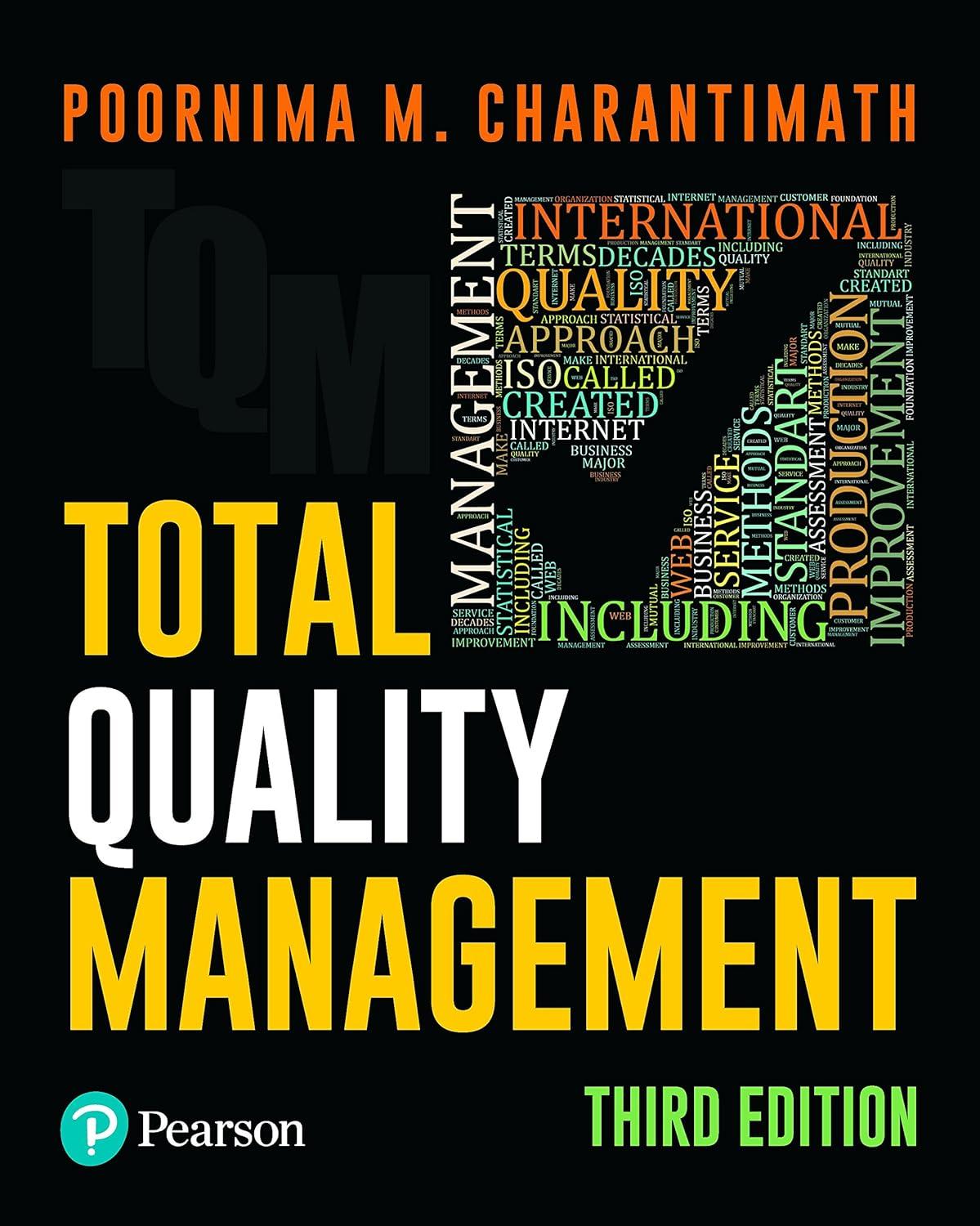MRC Bearing, the largest producer of aero-engine bearings in the world, is located in Falconer, New York.
Question:
MRC Bearing, the largest producer of aero-engine bearings in the world, is located in Falconer, New York. The company is the primary aerospace bearings supplier to General Electric, Pratt–Whitney and Rolls Royce, as well as to the world’s leading military and helicopter programmes.
Problem Identification In 1996, the company realised that it was behind on orders. Their customers were aggressive in their demands for cost reductions and shorter lead times. The majority of their maintenance hours were dedicated to emergency work orders. The company decided to implement a TPM programme in order to achieve a turnaround. After the implementation of TPM, the company was able to achieve a 98 per cent decrease in unplanned maintenance hours.
TPM Journey
The company started its TPM programme by focusing on a small area, which was critical to processes but was experiencing chronic problems. At first, a lot of people were skeptical and not really interested in getting involved with the TPM activities. The company had a core team of people who were excited about TPM. It also enlisted the help of people outside the organization to work with the core team.
TPM at MRC began with a week long TPM event. It started by cleaning, inspecting lubricating and performing corrective work on a piece of machinery. Once a machine was cleaned, it would be painted. At first, people were reluctant to participate in TPM events and ridiculed the TPM programme as “Totally Painted Machines.” As time elapsed, people started appreciating the improvements brought about by TPM events. Employees who were totally against TPM started participating in TPM workouts.
MRC formed equipment improvement teams (EITs) to work on resolving equipmentrelated issues. The teams initially worked on a piece of equipment with chronic problems.
The equipment was breaking down on a monthly basis and required three or four days each time to fix it. The team discovered the original manufacturer had used a sub-spec coupling on a drive unit. The problem was solved by upgrading to the proper coupling. The problem was solved by taking the time out to find the root cause of the failures, rather than just fixing the symptoms. In the years following this repair, the problem was completely eliminated.
That success showed a lot of people in the company that TPM can make everyone’s daily life easier as well as improve productivity.
After the initial success, MRC expanded their TPM efforts to their second facility. They created a TPM Steering Committee at their second site and also created a policy group to co-ordinate the efforts of both facilities. MRC trained 10 TPM Area Co-ordinators who undertake TPM activities for one week in each month. These TPM Co-ordinators organize TPM events in their areas, also lead EITs and make sure the process keeps working. MRC has begun to create full-time TPM teams. One such team was able to correct a long-standing equipment problem. This resulted in reducing the scrap produced by that equipment to almost zero. The areas that MRC focused on were:
1. Preventive maintenance
2. Putting predictive maintenance process in place (i.e. vibration analysis equipment)
3. Cleaning the machines, resulting in inspection
4. Creating standards on the equipment for cleaning, lubrication and daily checks
5. Collecting data on downtime
6. Creating equipment improvement teams
7. Creating TPM area co-ordinators
Lessons Learnt
The most important lesson learnt was that training is the key to being successful with TPM.
The company had organized some initial TPM awareness training programmes for the organization for both operators and mechanics. However, looking back they could have had achieved success faster if more training had been imparted. The support of the top management, the union, the hard work of the people at MRC and the support of their customers were the factors instrumental to the success of the TPM initiative.
Source: Adapted from “MRC Bearings’ TPM Journey: From Totally Painted Machines to Taking Pride in Our Machines,” available at www.maintenanceworld.com/Articles/marshall/mrcbearings.
htm, accessed April 2010.
Question For Discussion
1. What were the problems faced by MRC?
2. What was the solution used to address the problems at MRC?
3. What were the attributes responsible for the successful implementation of TPM at MRC?
4. Explain the TPM journey at MRC.
5. Comment on the statement “TPM is not totally painted machines but taking pride in our machines.”
Step by Step Answer:






